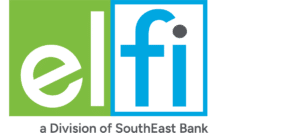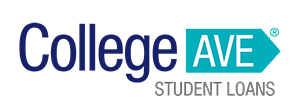College can create an opportunity for students to enjoy a rewarding career, and there aren’t many careers as rewarding as teaching. But schoolteachers don’t typically earn as much as other careers, with average starting salaries in some states below $33,000.
As a result, teachers paying off student loans can struggle to make their minimum monthly payments, let alone pay off the debt early.
But in one CNBC article, a high school band
teacher named Bobby Hoyt shares how he managed to pay off $40,000 in student
loan debt in just 18 months on a $49,000 salary. While your situation may be
different, here are some of the tips that helped him pay off student loans
faster.
1. Cut back on housing expenses
A lot of people manage to pay off large chunks of debt by living with their parents, and Hoyt is no exception. While he didn’t get a free ride, Hoyt and his wife, also a teacher, rented a room from her parents for $500 per month, saving the couple some money.
He acknowledges that living with in-laws comes with some challenges. But it was a necessary sacrifice to achieve their goal. He also recommends that college graduates pay rent if they decide to move in with family.
If you can’t make that arrangement work, it
may be worth considering renting an apartment with roommates to cut your
housing costs or renting out spare rooms in a space you’re already living in.
2. Make other short-term
sacrifices
Once you graduate and get a job, you’re likely already making more money than you did as a college student, and it’s easy to start using that money to buy things you want.
But Hoyt recommends sacrificing some of those lifestyle choices to focus on your debt. In particular, he cut cable, didn’t take vacations, and refused to buy new clothing, among other things.
Take a look at your discretionary spending and see if there are areas where you can cut back. When it comes to streaming services, for instance, consider asking a family member or friend to share a subscription. The same goes for phone plans.
The 2 Best Companies to Refinance Student Loans
Our Top-Rated Picks for 2024 Offer Low Rates and No Fees

3. Put as much of your income toward your student loans as possible
Hoyt says that he managed to put 75% of his paychecks toward his student loans. He’d take a flat amount from each paycheck and make a loan payment, then figure out how to live on the remaining income.
Of course, having a second income in his household helped, and Hoyt doesn’t disclose his wife’s salary. But it’s a good idea to look at your budget and see how much you can reasonably put toward your student loans every month and commit to that.
You may even set a payoff date and calculate how much you want to pay every month using that target.
Use Purefy’s student loan payoff calculator to get an idea of how much your extra monthly payments will shorten your repayment term.
Other ways teachers paying off student loans can succeed
There’s no single best way to pay off your student loan debt, and because every situation is different, it’s important to find the strategy that best fits your situation and goals. In addition to the steps that Hoyt took to pay down his student loans faster, here’s how to pay off student loans as a teacher in other ways.
Use the debt snowball or avalanche methods
This is best if you have multiple student loans with varying interest rates or balances and you have a little extra income you can put toward your loans every month.
With the snowball method, you’ll make the minimum monthly payment on all of your loans and put your additional payment toward the loan with the smallest balance. Once that loan is paid in full, you’ll take its minimum payment and the extra payment and put them toward the loan with the next-smallest balance. You’ll keep doing this until all of your loans are paid in full.
The debt avalanche method works the same way, but instead of targeting the loans with the lowest balance, you’ll focus on the loans with the highest interest rates.
The debt snowball method is helpful in giving you small wins early by paying off smaller balances. But in the long run, the debt avalanche method can help you save more on interest. Consider your situation and preferences to determine which approach is better for you. You can use online calculators like Undebt.it to compare the two options.
Use small windfalls to pay down your debt
Another option is the debt snowflake method, which has you take small amounts of money that you get throughout the year and make payments toward your student loans. This can include anything from birthday money and cashing in your change jar to tax refunds and work bonuses.
Because this approach doesn’t specify a certain amount that you pay every month, it can be more difficult to see how much money or time it can save you. But any extra amount that you can use to pay down your loans will cut your interest charges and reduce your repayment term.
Look for ways to earn extra income
While teachers certainly work hard enough during the school year to earn summers off, that summer break presents an opportunity to earn additional income beyond your salary.
Look for seasonal work opportunities that can offer you extra cash to put toward your student loan debt. You may also take some time to compare salaries in the different school districts where you live and see if you can leverage your experience for a better-paying job at a different school.
Consider loan forgiveness and repayment assistance programs
The Teacher Loan Forgiveness program offers up to $5,000 or $17,500 in forgiveness for schoolteachers, depending on your area of teaching. To qualify, you need to teach in a low-income school or work for a qualifying educational service agency for at least five consecutive years.
You may also be eligible for the Public Service Loan Forgiveness program if you work for a public school. This program will forgive your remaining balance after 120 qualifying monthly payments and full-time work for a government agency or a qualifying nonprofit organization.
Finally, there are various federal and state agencies that offer loan repayment assistance programs. Take some time researching opportunities that you may be eligible for in the American Federation of Teachers database.
Consider an income-driven repayment plan
If you have federal student loans and you’re struggling to keep up with your monthly payments, slowing things down may be a better solution for you than trying to accelerate your payoff.
Federal income-driven repayment plans allow you to cut your monthly payment to 10% to 20% of your discretionary income, which is based on your annual income, state of residence, and household size. It’ll also extend your repayment term to 20 or 25 years, and after your term ends, the remaining balance is forgiven.
Note: you’ll need to recertify your income every year to continue this repayment plan, so as your income grows, so will your monthly payment. But if your budget is tight, this may be the right move.
Refinance your student loans
If you have a strong credit history, you may be able to save money by refinancing your student loans. Student loan refinance lenders can sometimes offer lower interest rates than what you’re currently paying.
To find out if refinancing is right for you, use Purefy’s Compare Rates tool to get prequalified with multiple lenders at once. You’ll be able to view rate quotes side by side and compare interest rates and monthly payments with what you’re paying now.
While you compare interest rates, be sure to note the difference between variable and fixed rates. While variable rates start off lower, they can fluctuate over time, which can increase your total costs.
Refinancing can also potentially help you by extending your repayment term or even shortening it if you can afford a higher monthly payment.
That said, refinancing federal student loans means that you lose access to the benefits and protections federal loan borrowers enjoy, so think carefully about both the benefits and drawbacks to determine if it’s right for you.
See How Much You Can Save
Student Loan Payoff Calculator
View Details
Collapse
Check how long it will take you to pay off your student loans. Quickly see the effects of lower rates, extra payments, and different terms on your repayment plan.
Results
| Current Payment | w/ extra payment | Difference | |
|---|---|---|---|
| Term | 10 years | — | — |
| Payoff Date | — | — | |
| Total Interest | $16,560 | — | — |
Want to lower your rate to help pay off student loans faster? Check your rate at our top-rated lenders in 2 minutes, with no impact on credit.
The bottom line
Teachers paying off student loans can run into the problem of not having enough income to pay off their debt quickly. While Hoyt’s story shows that early student loan payoff is possible, there are certain elements to his experience that aren’t universal.
As a result, it’s crucial that you take the time to understand your situation and carefully research all available options. You’ll also want to explore both the advantages and disadvantages of each option to get an idea of which approach — or mix of approaches — works best for your financial needs and goals.
Whether you manage to pay off your debt years early or just months early, the result is often hundreds or thousands of dollars in interest savings and more peace of mind knowing that you’ve accomplished your objective and can focus on other financial goals.
Interested in Student Loan Refinancing? Compare rates from top-rated lenders and see how much you could save.
Checking your rates takes 2 minutes and has no impact on credit.


















